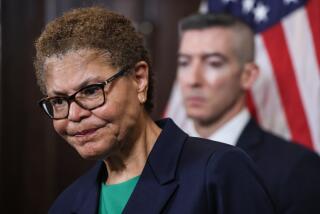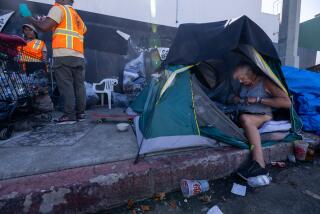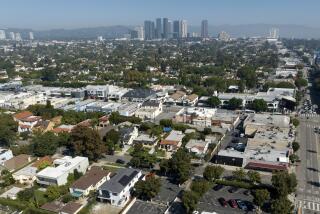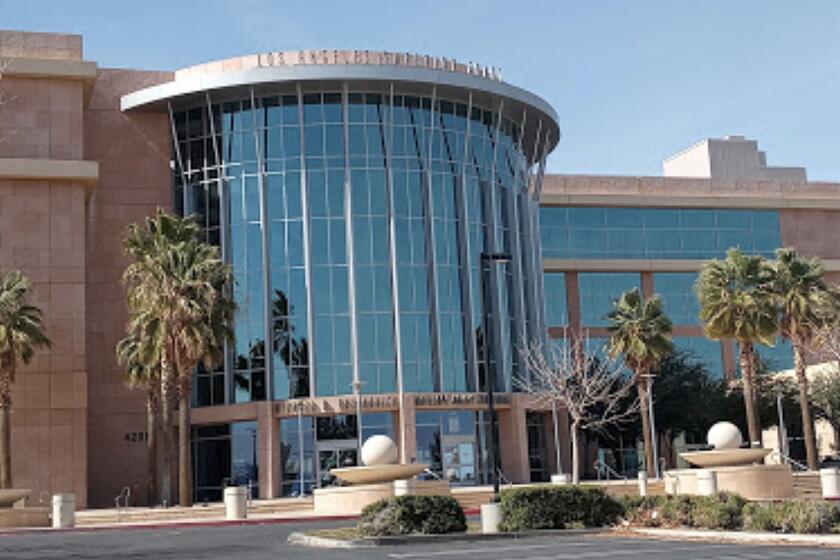Negative Report : Hopes Fade for a City of Calabasas
- Share via
A government report predicting that cityhood for Calabasas would be a financial disaster regardless of its size appears to have dashed any hope for incorporation in the foreseeable future.
After studying three proposed boundaries for Calabasas, Ruth Benell, executive director of the Local Agency Formation Commission, which oversees incorporations, concluded that, even with the smallest boundary, the city’s expenditures would outstrip revenue by $613,508.
“If the residents feel the need for a local government rather than county government, it would seem to be more logical to annex to the adjacent city of Los Angeles than to form another city along the Ventura Freeway corridor,” Benell concluded in her report.
As they have throughout the incorporation process, cityhood supporters criticized LAFCO’s financial projections for the proposed city.
‘Some Peculiarities’
“There are some peculiarities. . . . We have questions about the amount of money budgeted by LAFCO that the city would have to face,” said Dennis Washburn, a vice president of the Calabasas Cityhood Study Committee.
Based on the report, Benell is recommending that the LAFCO commission reject the incorporation request. Without LAFCO’s approval, Calabasas residents will not be permitted to vote on the cityhood issue.
LAFCO is scheduled to vote July 22 on the incorporation of Calabasas. If the plan is rejected, cityhood committee members would have to wait a year before they could restart the process.
The LAFCO report was prompted by cityhood proponents’ last-ditch effort in May to salvage its two-year campaign to create a city bounded on the east and west by the cities of Los Angeles and Agoura Hills, and on the north and south by the Ventura County line and the Santa Monica Mountains’ Saddle Peak.
Boundaries Redrawn
This spring Benell concluded that the supporters’ proposed 26-square-mile city would have resulted in a $3-million municipal deficit. Facing certain LAFCO rejection, supporters asked Benell to redraw the boundaries to make the city smaller and more financially viable.
But the results were equally disappointing for supporters.
The expected budget deficits for the three municipal choices ranged from $613,508 to almost $1 million.
For the smallest proposed city, a 6.8-square mile area next to Los Angeles and Hidden Hills with 15,510 residents, the report estimated that revenues would generate $2 million but expenditures would require $2.6 million. In another configuration, a seven-square-mile area that is primarily undeveloped, the projected deficit jumped to $900,140.
Fire Protection Is Costly
As with incorporation efforts elsewhere, a controversial fire department expenditure proved to be a major stumbling block to cityhood. The report estimated that it would cost the fledgling city almost $1 million in wild-land fire protection costs if the third alternative, a 13.8 square-mile city became a reality.
Incorporation backers have called the wild-land fee amount “ludicrous.” State Sen. Ed Davis (R-Valencia) has sponsored legislation that would severely limit those fees in incorporation efforts.
“Wild-land fire protection is still with us,” Washburn lamented. “It’s still the break point of this arrangement.”
Cityhood supporters say they intend to examine the LAFCO figures in the hope of discovering errors.
“I think we have to look at the numbers and see where we could make inroads,” said Jim Foley, another vice president.
Benell said that Calabasas may yet qualify for cityhood as the area gains businesses and grows in population.
“The bottom line is the expenditures add up to more than revenues,” Benell said. “In future years, no doubt revenues will catch up with expenditures, but it has not yet.”
More to Read
Sign up for Essential California
The most important California stories and recommendations in your inbox every morning.
You may occasionally receive promotional content from the Los Angeles Times.










